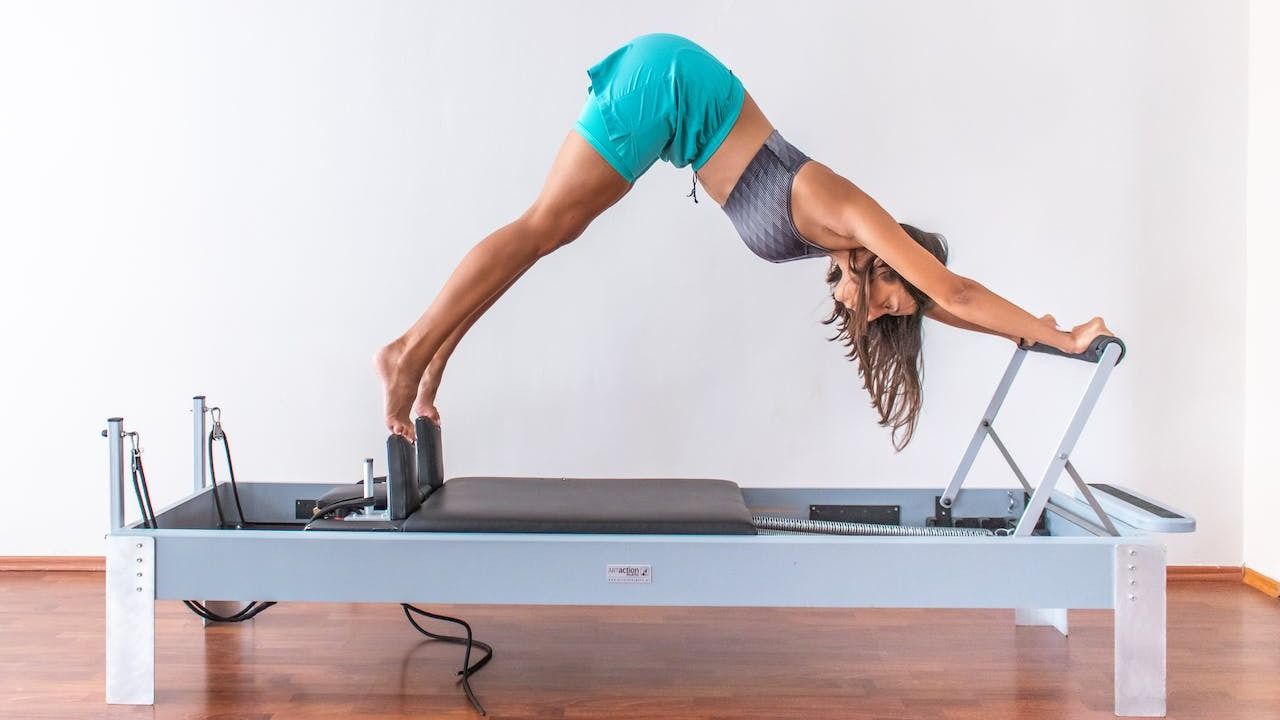Pilates vs Gyrotonic: Which one should I do?
Discover the key differences between Pilates and Gyrotonic exercises. Learn how Pilates focuses on core strength and stability, while Gyrotonic offers a unique approach to flexibility and holistic movement. Find out which might suit your fitness goals better in our concise comparison.
If you’ve ever found yourself wondering about the best way to enhance your fitness routine, you’re in the right spot. Both Pilates and Gyrotonic are incredible in their own ways, but they’re built on different foundations that might just sway your preference.
Starting with Pilates, it’s all about control, precision, and breathing. Joseph Pilates, the genius behind this method, was big on the idea that mental and physical health are interlinked. So, Pilates isn't just about getting through a set of exercises; it's about doing each movement with utmost attention to form, balance, and breath.
The core principles here include concentration, control, centering, flow, precision, and breathing. This approach is fantastic for those who love a structured workout that pays close attention to form and alignment.
On the flip side, Gyrotonic expansion system takes a slightly different route. Created by Juliu Horvath, it’s like Pilates’ free-spirited cousin. Gyrotonic exercises are all about fluidity, spirals, and circular movements.
The principles here lean heavily into the natural movements of the body, emphasizing connectivity, breath, and rhythm. It’s a bit like applying yoga, dance, swimming, and tai chi all into one holistic system. Gyrotonic is perfect if you’re looking to increase your range of motion and want a workout that feels like a dance with your body.
So, what’s it gonna be? Are you drawn to the precision and structure of Pilates, or does the fluidity and holistic nature of Gyrotonic speak to you? Don’t worry; there’s no wrong answer here. It’s all about finding what resonates with you and your body’s needs. Stick around as we dive deeper into the focus, equipment, and movements of both. By the end, you’ll have a better sense of whether Pilates or Gyrotonic is your fitness soulmate. Let’s keep this journey going!

What’s the difference?
Alright, let's zoom in on the focus of both Pilates and Gyrotonic exercises. Each method has its own spotlight, so let’s shed some light on what makes them shine.
Pilates Focus:
When you step into a Pilates studio, you're stepping into a world of core strength, stability, and alignment. Pilates workouts revolve around building a strong powerhouse—the muscles in your abdomen, lower back, hips, and glutes.
The focus here isn’t just about getting those six-pack abs (although that’s a nice bonus!); it’s about creating a strong, stable foundation for your body to move efficiently and gracefully. With Pilates, you'll find yourself honing in on your body's alignment, improving posture, and enhancing overall strength and flexibility. Plus, since Pilates exercises are low-impact, they’re gentle on your joints, making them suitable for people of all fitness levels and ages.
Read more: 4 benefits of Pilates that'll inspire you to strengthen your core!
Gyrotonic Focus:
Now, let’s turn our attention to Gyrotonic. Picture yourself in a Gyrotonic session—it’s like dancing with your body in three-dimensional space. The focus here is on fluid, circular movements that stretch and strengthen your entire body.
Gyrotonic exercises are designed to mobilize and articulate your spine, limbs, and joints, helping you unlock tightness and improve your range of motion. It’s all about tapping into the natural movement patterns of your body, encouraging freedom and flow.
With Gyrotonic, you’ll find yourself focusing on breath, rhythm, and connectivity as you move through a series of graceful, spiraling motions. And don’t be surprised if you feel like you’re floating on air by the end of your session!
The equipment
Now, let’s take a closer look at the equipment used in both Pilates and Gyrotonic workouts. While they share some similarities, there are also distinct differences that set them apart.
Pilates
In the world of Pilates, you’ll often come across equipment like the reformer, cadillac, chair, and barrel. These pieces of equipment might look intimidating at first glance, but they’re actually your best pals when it comes to achieving those Pilates gains.
The reformer, for example, is a versatile contraption with a sliding carriage, springs, and straps that provide resistance as you move through various exercises. It’s like a bed on wheels that helps you build strength, flexibility, and control with every rep.
- Reformer: A versatile apparatus with a sliding carriage, springs, and straps for resistance.
- Cadillac: A comprehensive unit featuring adjustable springs and bars for targeted muscle work.
- Chair: A compact piece of equipment challenging stability and strength.
- Barrel: Used for stretching, strengthening, and improving flexibility.
Gyrotonic
Now, let’s switch gears to Gyrotonic equipment. Unlike Pilates, Gyrotonic workouts primarily revolve around a single piece of equipment known as the Gyrotonic Expansion System (GES) Pulley Tower.
This towering structure might resemble a medieval pulley system (minus the torture, of course), but it’s actually your gateway to fluid, three-dimensional movement. The GES Pulley Tower consists of a bench, handle unit, and a series of weighted pulleys and rotational discs that allow for dynamic resistance and support.
It’s like your personal dance partner, guiding you through spiraling motions and graceful stretches that awaken your body from head to toe. With Gyrotonic, you’re not just working out; you’re engaging in an artful exploration of movement and expression.
- Gyrotonic Expansion System (GES) Pulley Tower: The primary equipment for Gyrotonic workouts.
- Bench: Provides support during exercises.
- Handle Unit: Allows for various grips and movements.
- Weighted Pulleys and Rotational Discs: Enable dynamic resistance and three-dimensional movement.
The movement
Let's explore the movements that define both Pilates and Gyrotonic exercises. Each method offers a distinct approach to movement that caters to different aspects of fitness and wellness
Pilates movement:
Pilates movements focus on controlled, precise actions that engage the core and promote alignment. Whether you're performing classic exercises like the Hundred or the Swan, or more advanced moves like the Teaser or the Snake Twist, Pilates emphasizes fluidity and grace in every motion.
You'll often hear instructors cueing you to engage your powerhouse—the muscles of your abdomen, lower back, hips, and glutes—to support and stabilize your movements. With Pilates, it's not just about going through the motions; it's about moving with intention, mindfulness, and attention to detail.
Gyrotonic movement:
On the other hand, Gyrotonic movements take a more dynamic and three-dimensional approach. Inspired by natural movement patterns like swimming, yoga, and tai chi, Gyrotonic exercises encourage fluidity, flexibility, and freedom of movement. Picture yourself spiraling, twisting, and stretching in all directions as you flow through exercises on the Gyrotonic Pulley Tower.
Each movement is designed to mobilize and articulate your spine, limbs, and joints, promoting greater range of motion and body awareness. With Gyrotonic, you'll feel like you're dancing with your body, exploring new pathways and possibilities with every session.
Should I do Gyrotonic or Pilates?
Now that we've explored the principles, focus, equipment, and movements of both Gyrotonic and Pilates, you might be wondering: Which one should I choose? Let's break it down to help you make an informed decision.
Consider Pilates if:
- You prioritize precision, control, and alignment in your workouts.
- You're looking to strengthen your core, improve posture, and increase flexibility.
- You prefer structured exercises that focus on specific muscle groups.
- You enjoy the variety of equipment-based workouts, such as the reformer, cadillac, chair, and barrel.
- You appreciate a mind-body connection and value the mental benefits of concentration and breathwork.
Consider Gyrotonic if:
- You crave fluidity, freedom of movement, and three-dimensional exploration.
- You want to enhance your range of motion, mobility, and body awareness.
- You enjoy exercises that mimic natural movement patterns and promote whole-body integration.
- You're intrigued by the artistic and expressive elements of Gyrotonic workouts.
- You prefer a holistic approach to fitness that engages both the body and mind.
Ultimately, the choice between Gyrotonic and Pilates comes down to your personal preferences, fitness goals, and what resonates most with your body and lifestyle. Some people might find that they love both and choose to incorporate elements of both methods into their fitness routine. Others might discover a clear preference for one over the other.
The most important thing is to listen to your body, stay open to new experiences, and find a practice that brings you joy, challenges you, and supports your overall health and well-being. Whether you decide to embark on a journey with Pilates, Gyrotonic, or both, you're taking a positive step toward nurturing your body, mind, and spirit. So go ahead, take the leap, and let the movement begin!
Friska 🐨
Read next: Pilates for weight loss: The ultimate guide to shedding pounds with Pilates

